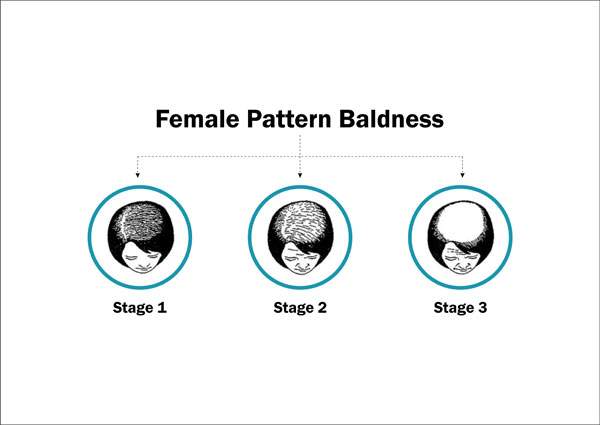Understanding Female Pattern Baldness: Causes and Treatment Options at NIS
Female pattern baldness, despite being less common than its male counterpart, affects a significant number of women, with research suggesting that around 40% of women display signs of hair loss by the age of 50. This condition, while not as widely discussed as male baldness, can be emotionally distressing for women, as hair often holds significant personal and social value. This article aims to shed light on the causes of female pattern baldness and explore potential treatment options for those affected.
What is Female Pattern Baldness?
Also known as androgenetic alopecia, female pattern baldness is a form of diffuse hair loss characterized by the thinning of hair at the top of the frontal region. Unlike male baldness, female pattern baldness typically retains the frontal hairline but leads to increased scalp visibility and hair thinning in specific areas.
What Does Female Pattern Baldness Look Like?
Female pattern baldness progresses through three distinct stages:
Stage 1: Initial thinning at the top portion of the scalp, near the hair partition.
Stage 2: Widening of the hair partition, accompanied by increased thinning.
Stage 3: Further thinning, resulting in visible portions of the scalp becoming apparent.

Can Genetics Cause Female Pattern Baldness?
Genetics play a significant role in female pattern baldness, with some women inheriting genes that make their hair follicles susceptible to damage from the male hormone dihydrotestosterone (DHT). This hormonal imbalance leads to shorter, thinner hair growth, with a reduction in the hair growth phase (anagen) and an increase in the hair shedding phase (telogen), ultimately resulting in increased scalp visibility.
What Else Causes Female Pattern Baldness?
In addition to genetics, hormonal fluctuations also contribute to female pattern baldness. Androgens, typically balanced by estrogen in women, can become dominant under certain conditions, leading to hair follicle damage. Factors such as stress, poor nutrition, medications, and gynecological conditions can also exacerbate hair loss in women.
Can Women Get Female Pattern Baldness in Their 20s?
While female pattern baldness is more prevalent in post-menopausal women, it can occur at any age. Studies have shown that the prevalence of female pattern baldness increases with age, with adolescents with a family history of alopecia also at risk.
How is it Diagnosed?
Trichologists can diagnose female pattern baldness through visual examination, although blood tests may be required to rule out underlying health conditions. Ultrasound imaging of the pelvic region may also be recommended in some cases.
Treatment Options for Female Pattern Baldness
Treatment for female pattern baldness varies depending on the stage and severity of the condition. While early-stage thinning may be managed through styling techniques, advanced stages may require more intensive interventions such as hair transplants or the use of hairpieces.
Common treatment options include:
- Minoxidil: Topical application of minoxidil stimulates hair growth but does not cure baldness.
- Hormonal Treatment: Medications such as spironolactone, cyproterone, finasteride, and flutamide can block androgen effects and prevent further hair loss.
- Natural Remedies: Phytoestrogens found in plants like Dong Quai and certain foods can help regulate hormonal imbalances associated with hair loss.
Preventing Female Pattern Baldness
While genetic and hormonal causes of female pattern baldness cannot be prevented, adopting healthy hair care habits and lifestyle practices can promote overall hair health and reduce the risk of breakage and loss.
Can You Prevent Female Pattern Baldness?
- Regular scalp massages to improve circulation.
- A balanced diet rich in proteins and minerals.
- Minimizing use of heat styling tools and harsh hair products.
- Choosing mild shampoos and natural hair cleansers.
- Avoiding hormonal disruptions and managing stress levels effectively.
By incorporating these practices into their routine, women can support healthy hair growth and maintain their hair’s vitality for years to come.


